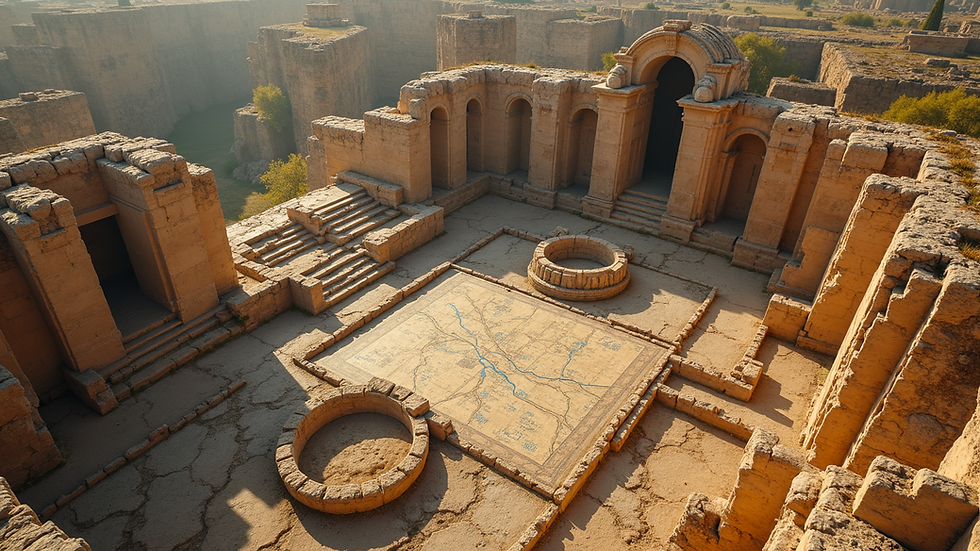How to Create Memorable Adventures for Your D&D Campaigns
- Matthew David
- Jun 16
- 4 min read
Creating memorable adventures for your Dungeons & Dragons (D&D) campaigns can seem daunting, but with the right approach, it can be a rewarding experience. Whether you’re a seasoned Dungeon Master (DM) or new to the game, there are numerous techniques that can help you craft engaging stories and thrilling sessions. This blog post will give you practical tips, vivid examples, and an overall guide on how to create unforgettable adventures that your players will talk about for years to come.
Understanding the Basics of D&D Campaigns
At the heart of every D&D campaign lies a story, and crafting an epic narrative is crucial to the overall experience. Most campaigns rely on a blend of fantasy, character development, and world-building.
The first step in creating a campaign is understanding your players' preferences. Are they drawn to dark, gritty settings or light-hearted adventures? Do they enjoy combat-heavy scenarios, or do they lean more towards diplomacy and puzzle-solving? Communicating with your players can provide insights that will help you tailor an adventure they will love.
Here’s a practical tip: Create a character questionnaire for your players. Ask them about their character's backgrounds, motivations, and goals. This can serve as a solid foundation for your story and will make the game feel more personal to them.
Building an Engaging Plot
Every great adventure starts with a plot. Your plot should have a clear goal, rising tension, and a satisfying resolution. Here’s a structured method to build your adventure’s plot:
Theme: Identify the central theme. Are you focusing on betrayal, redemption, or exploration?
Inciting Incident: What event pulls the characters into the adventure? This is often a problem that needs solving or a call to action.
Conflict: Introduce obstacles. These could be villains, monsters, or even moral dilemmas.
Climax: Plan a thrilling peak where tensions reach their highest point.
Resolution: Don’t forget to wrap up loose ends. Allow for character growth and closure.
As an example, consider a theme of redemption. Your inciting incident could involve a village being razed by a dragon whose wrath is tied to the players’ past actions. The conflict expands as they seek allies and gather resources to confront the dragon. Eventually, they face the beast, leading to a climactic battle that allows each character to redeem themselves.

Crafting Memorable NPCs
Non-Player Characters (NPCs) help fill your world with life and can become some of the most memorable aspects of your campaign. They provide quests, insights, and sometimes, conflicts for your players to navigate.
When creating NPCs, think beyond their physical appearance. Include unique personalities, voices, and quirks. For instance, an eccentric wizard who constantly misplaces his spells could create comedic moments while adding depth to your story.
Additionally, consider the relationships between your NPCs and the players' characters. An NPC with a mysterious past who reveals crucial information about the main antagonist can add layers of intrigue. Explore their motivations and how they relate to the characters to enhance interaction.
Incorporating Player Backstories
A key element in creating memorable adventures is integrating your players’ backstories into the larger narrative. This will make them feel like the campaign is tailored specifically for them.
For example, if a player has a character with a tragic past involving loss, you can introduce an antagonist linked to that history. This will not only engage the player but drive character development.
Ask for permission to touch upon sensitive themes and always be prepared to pivot if an element is triggering for any player.

Creating Dynamic Setting
The setting is the foundation of your adventure. It influences mood, tone, and the players' decision-making. Whether it's a bustling tavern, an eerie dungeon, or a mysterious forest, enrich your settings with details that stimulate the senses.
Visuals: Describe the surroundings through vivid imagery. For example, instead of saying “the forest is dark,” you might say, “The twisted branches overhead barely leech any sunlight, casting an ominous darkness that seems to breathe.”
Sounds and Smells: Enhance immersion. What sounds do the characters hear? Is there the distant clash of swords or the soft whisper of a rogue’s footsteps? Scents like damp earth or burning wood can heighten the atmosphere.
Interactivity: Make your environments reactive. Let players interact with their surroundings. They might discover a hidden passage or trigger a trap, leading to unexpected changes in the adventure.
Adding Unique Elements to Adventures
Adding unique elements can set your adventure apart. Implement unusual challenges, creative puzzles, or engaging scenario twists. For instance, a challenge where players must negotiate peace between two warring factions, instead of fighting them, can lead to creative problem-solving.
Consider the mechanics of gameplay as well. Introducing new rules, monsters, or artifacts can give fresh life to a campaign. For online D&D campaigns, consider using virtual maps, sound effects, and dynamic storytelling to enhance online interaction and visual interest.
Conclusion with an Exciting Finale
As the adventure comes to a close, it’s important to deliver a satisfying finale. Whether it’s a large-scale battle, a touching goodbye, or a moral lesson, make sure it resonates with the characters and players.
Reflect on individual character arcs during the finale. Celebrate their achievements and recognize their efforts throughout the campaign. Express gratitude for their contributions and involvement—after all, D&D is a collaborative experience.
Finally, consider introducing a cliffhanger or an open-ended conclusion. This could set the stage for future campaigns and keep players eagerly anticipating what comes next.

By following these strategies, you can create a D&D campaign filled with memorable adventures. With well-defined plots, engaging NPCs, immersive settings, and unique elements, your players will be left with stories they cherish and recite long after the dice have been put away.
Embrace the process of storytelling, enjoy every moment at the table, and don't be afraid to think outside the box. Happy gaming!



Comments